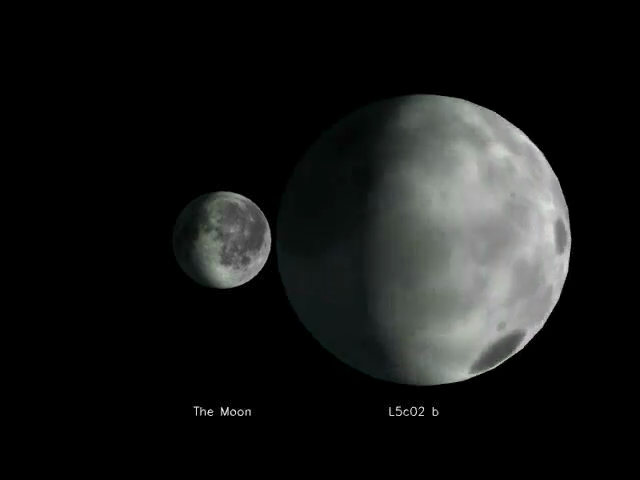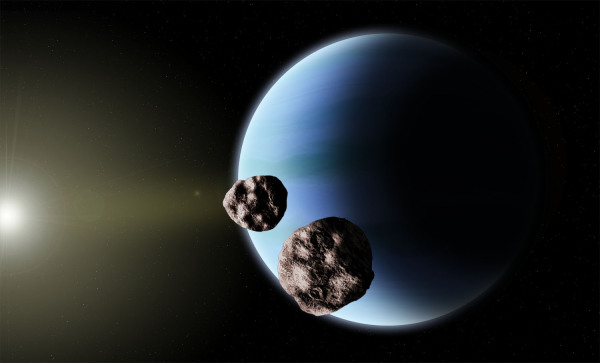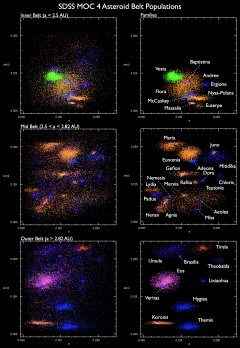 Wide binaries in the Kuiper Belt are extremely sensitive probes of the conditions in the outer Solar System. Because even very slight perturbations could dislodge them from orbit around each other, we can use them to test whether or not average Kuiper Belt Objects are frequently subjected to impacts or if they ever interacted with giant planets.
Wide binaries in the Kuiper Belt are extremely sensitive probes of the conditions in the outer Solar System. Because even very slight perturbations could dislodge them from orbit around each other, we can use them to test whether or not average Kuiper Belt Objects are frequently subjected to impacts or if they ever interacted with giant planets.
The origin of the Kuiper Belt is a debated subject, and one theory holds that interactions with Neptune transported the Kuiper Belt to its present location from originally much closer to the Sun. However, Parker and Kavelaars (2010c) show that such interactions would have destroyed the wide binaries in the Kuiper Belt, through the process illustrated here.
 This animation of a single close encounter between a binary and Neptune shows one view centered on the binary and another centered on Neptune. Significant modification (though not disruption, in this case) of the binary orbit is seen during the closest approach.
This animation of a single close encounter between a binary and Neptune shows one view centered on the binary and another centered on Neptune. Significant modification (though not disruption, in this case) of the binary orbit is seen during the closest approach.
These wide binaries (like 2001 QW322) have only been found in the Cold Classical Kuiper Belt, indicating that this region of the Kuiper Belt was likely never subjected to interactions with Neptune, and may have formed near its present location. Read more at Nature News.
In my PhD research, I demonstrated that the widest Kuiper Belt binaries have orbits inconsistent with the predictions of classical theories of binary formation. A novel mechanism for binary production is needed; recently it has been shown that binary objects may be a side-effect of gravitational collapse-driven planetesimal formation, and binaries formed through this process may have properties more in-line with those observed.
In addition to being valuable testbeds for astrophysics, these binaries are interesting places in their own right. This animation compares the angular size of the Moon as seen from Earth to the angular size of the satellite of L5c02 (a wide binary discovered by the CFEPS survey) seen from its surface over one orbital period. In other words, if you were standing on the surface of this object and looking up toward its companion, this is roughly what you would see (compared to how we see our own Moon).




